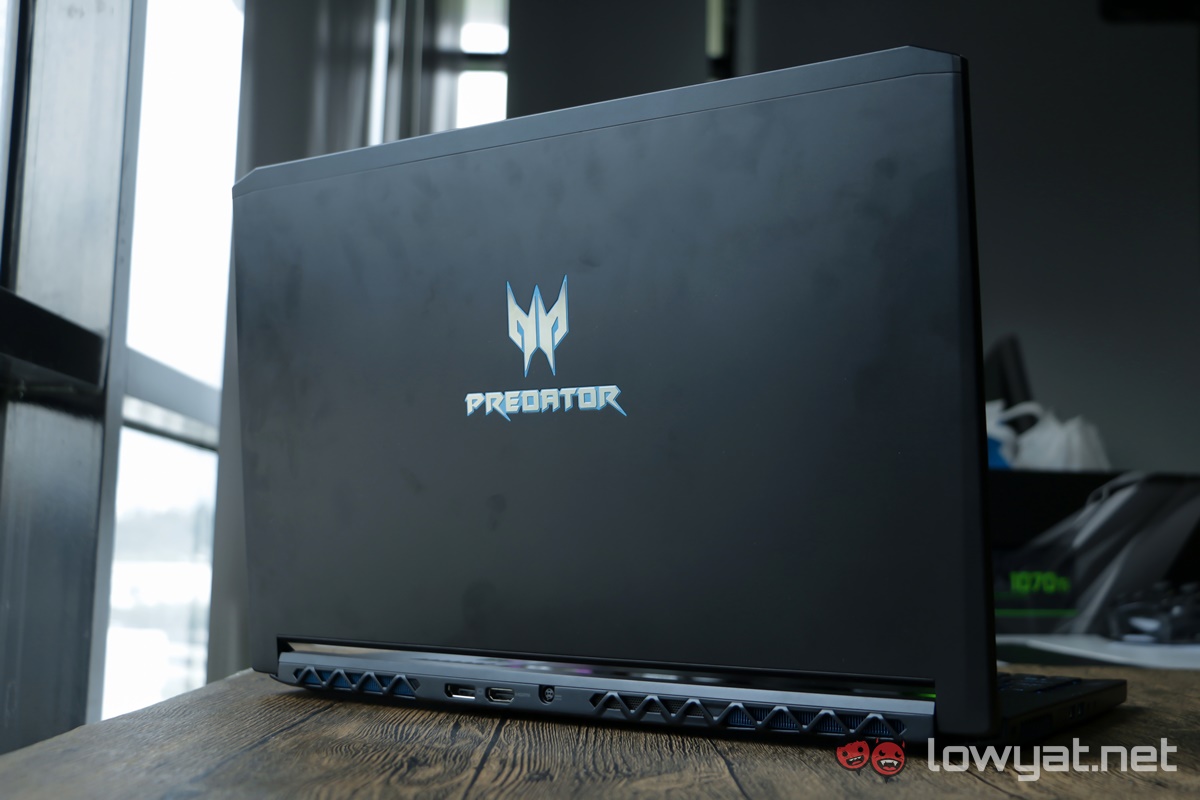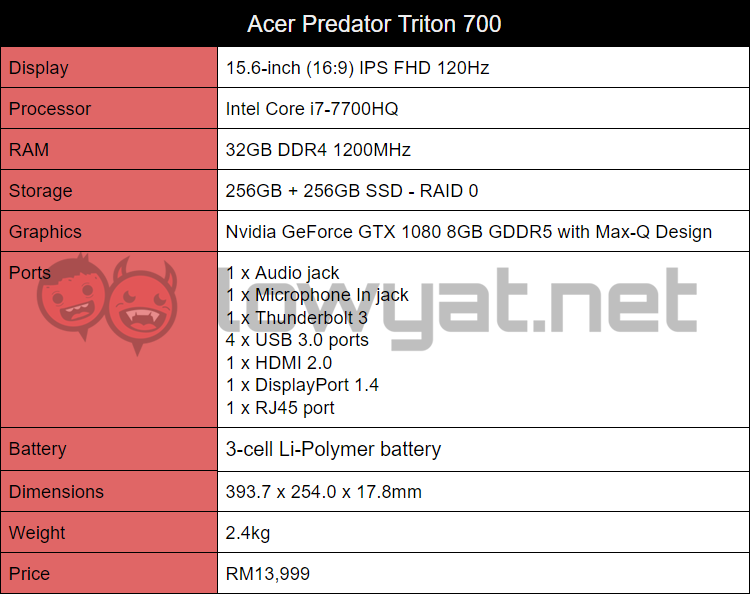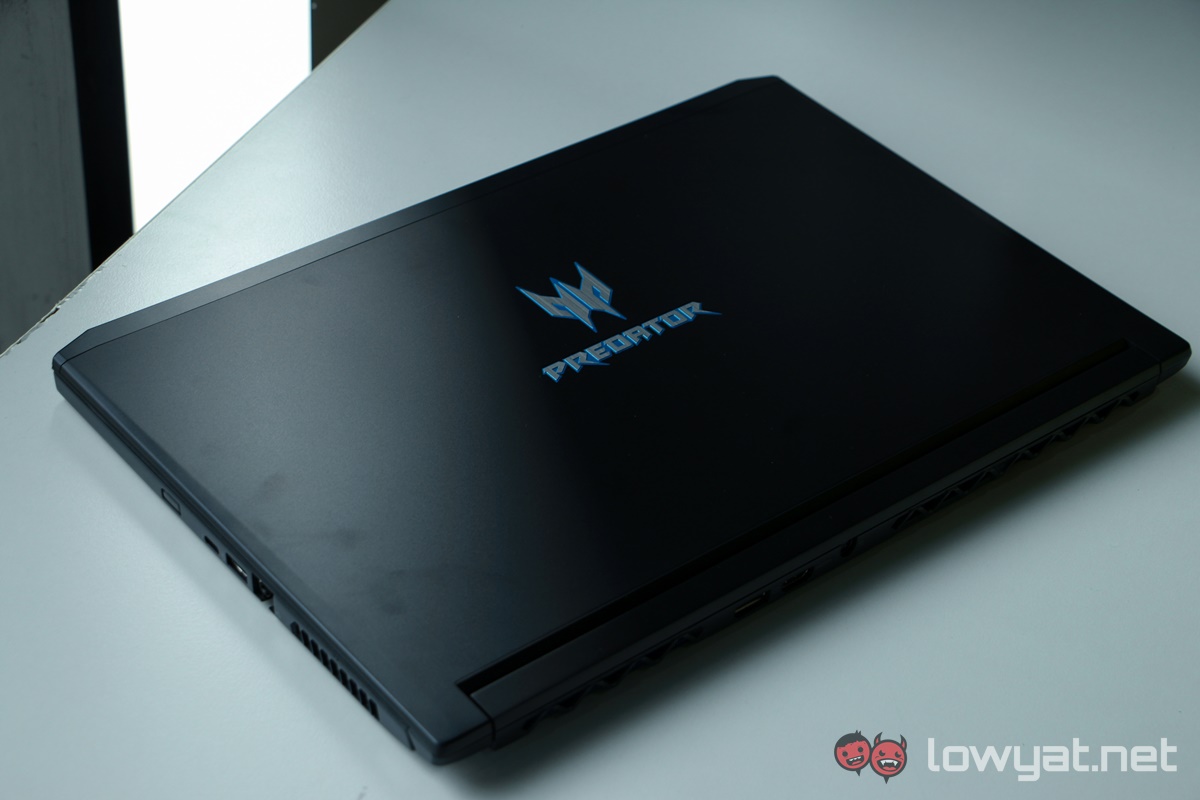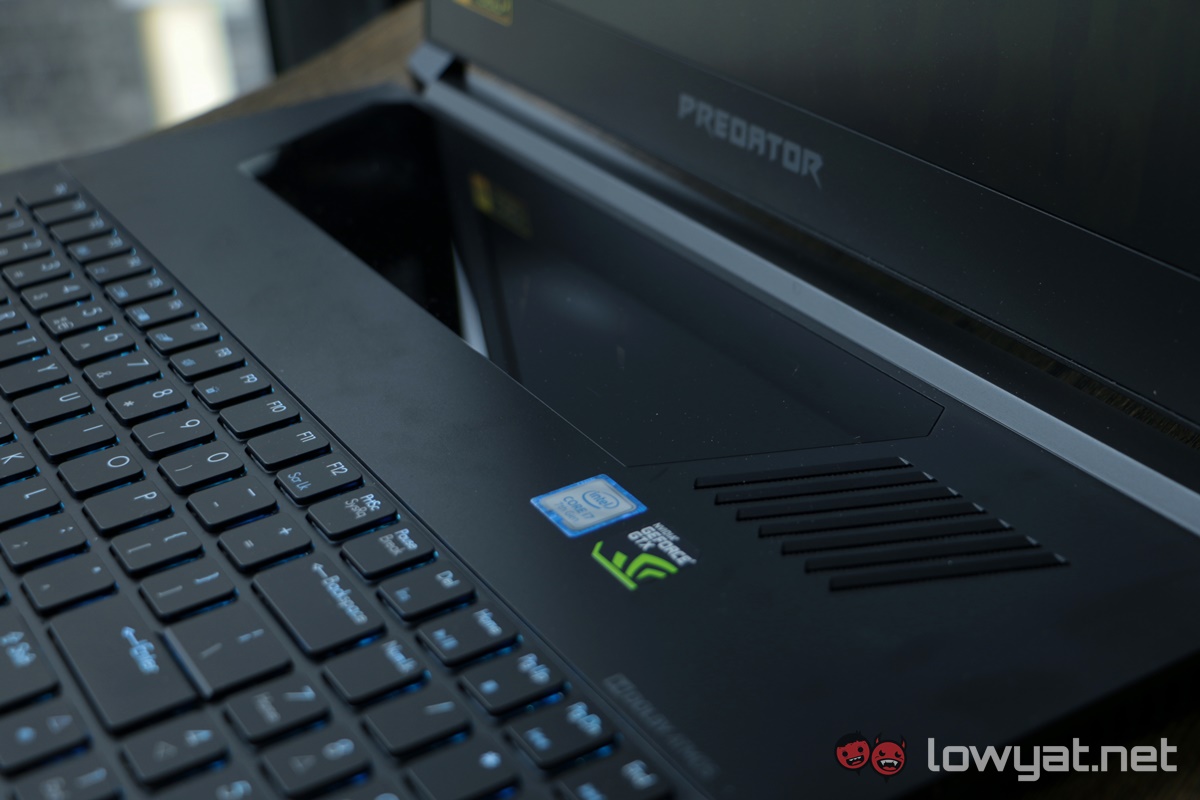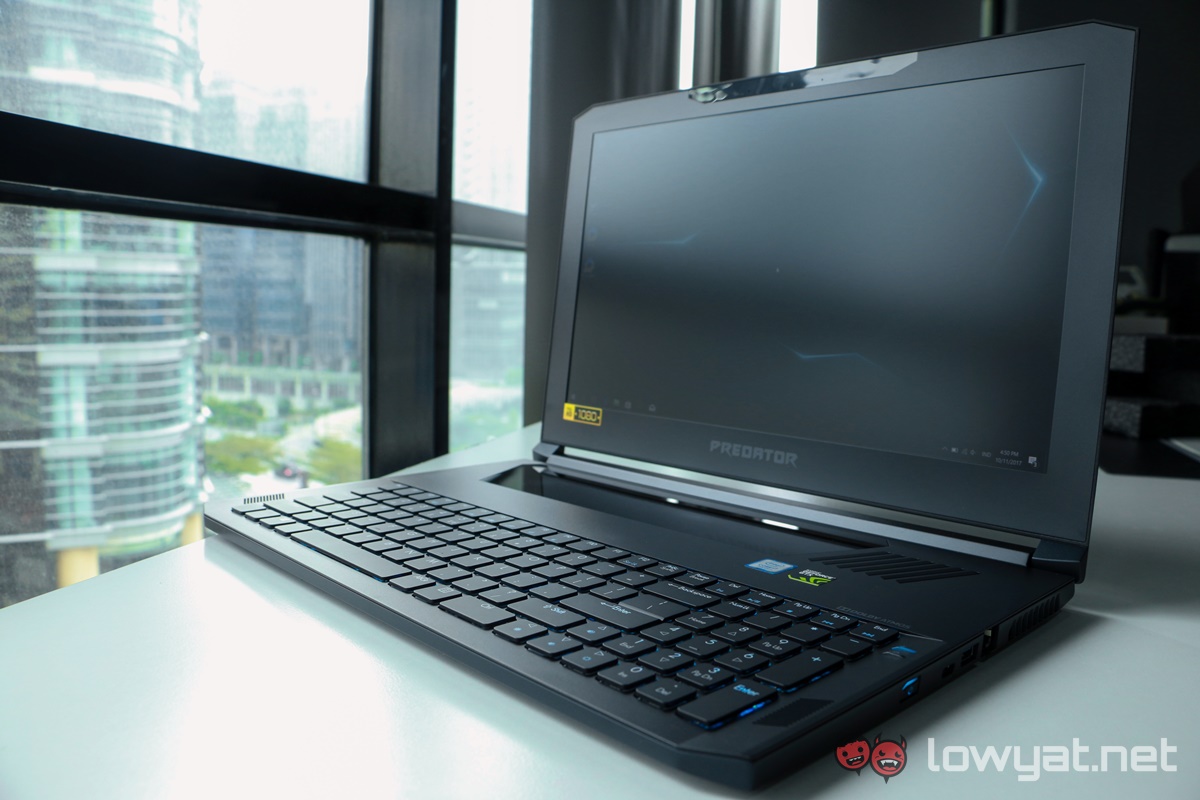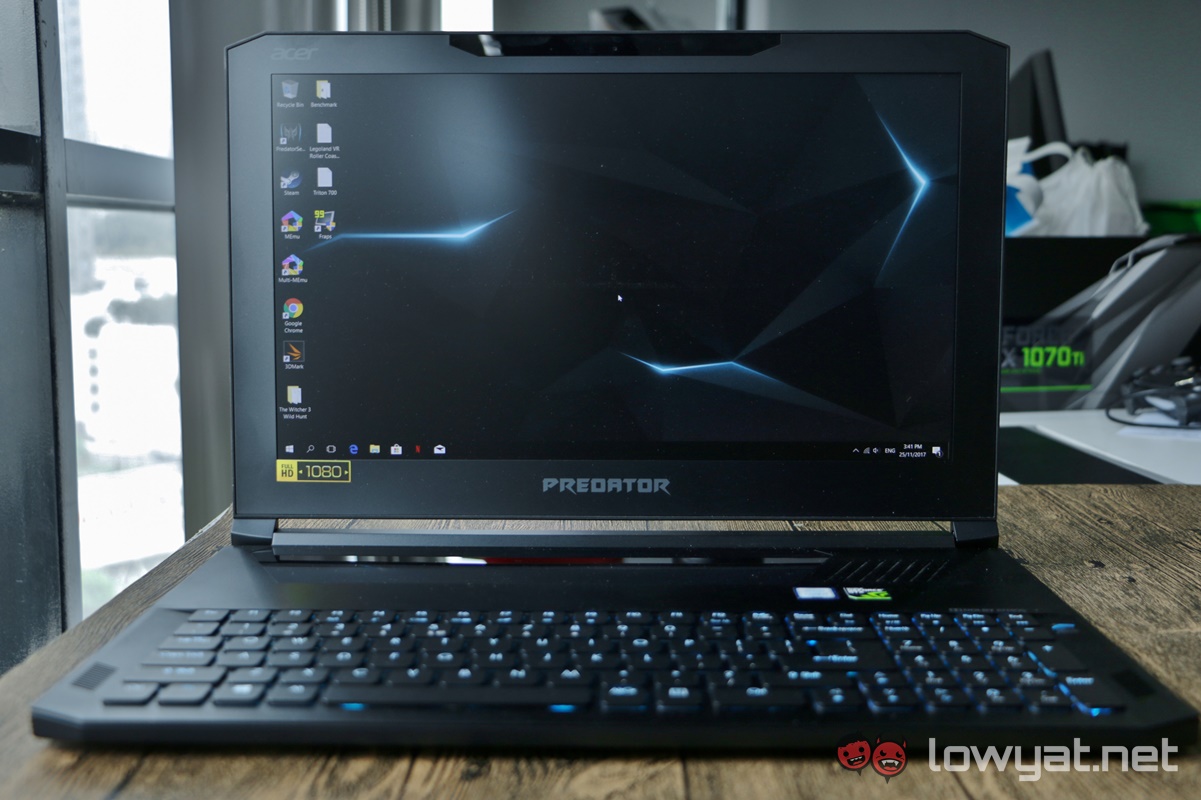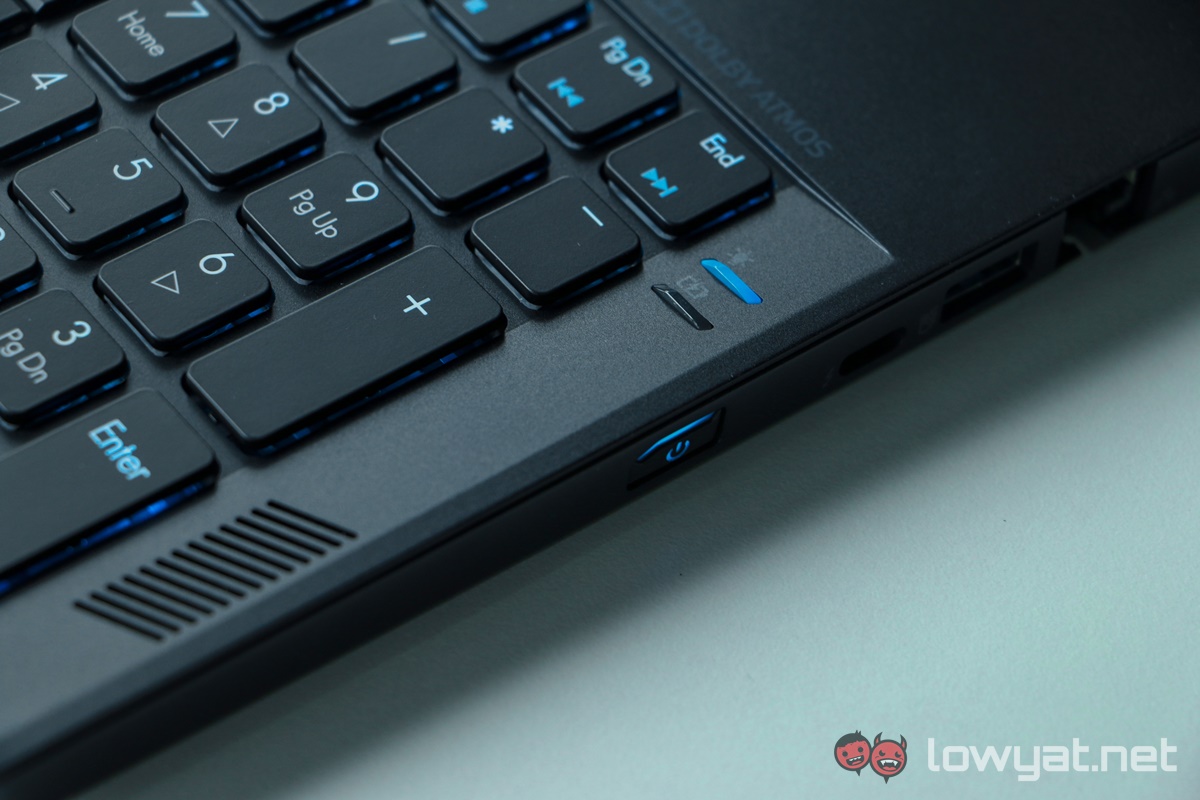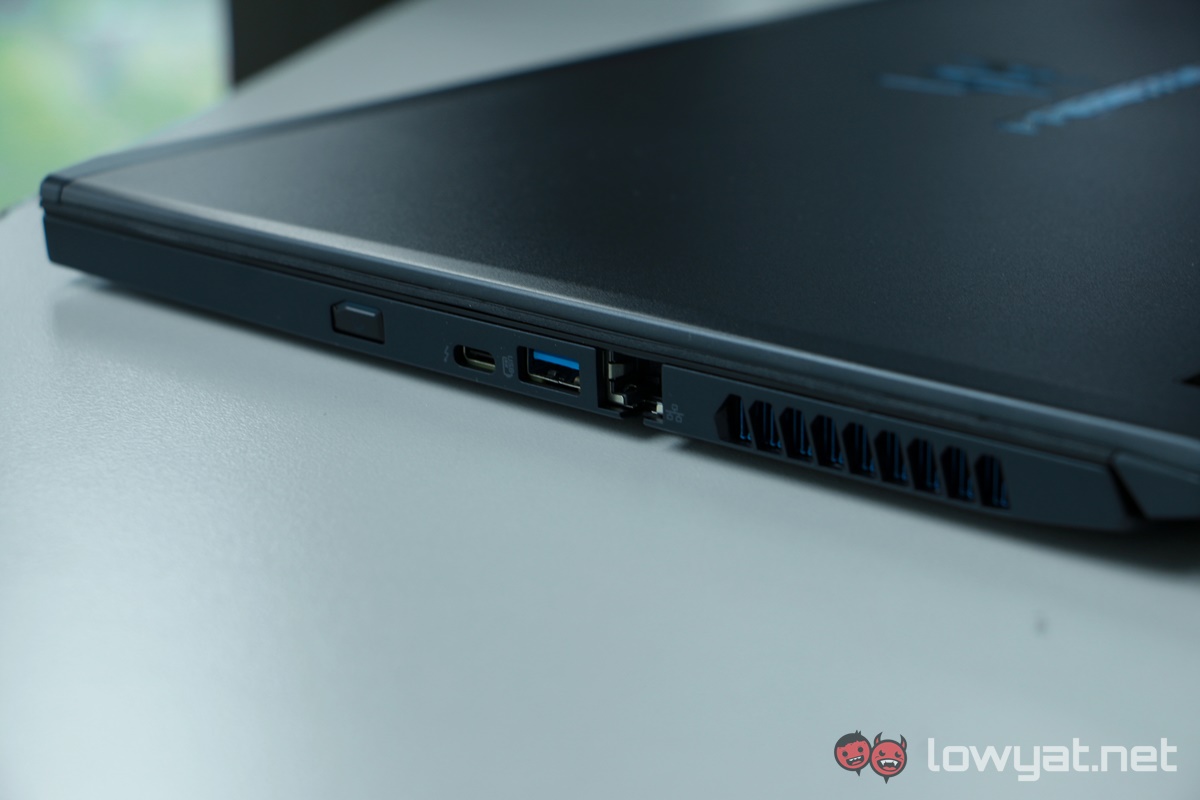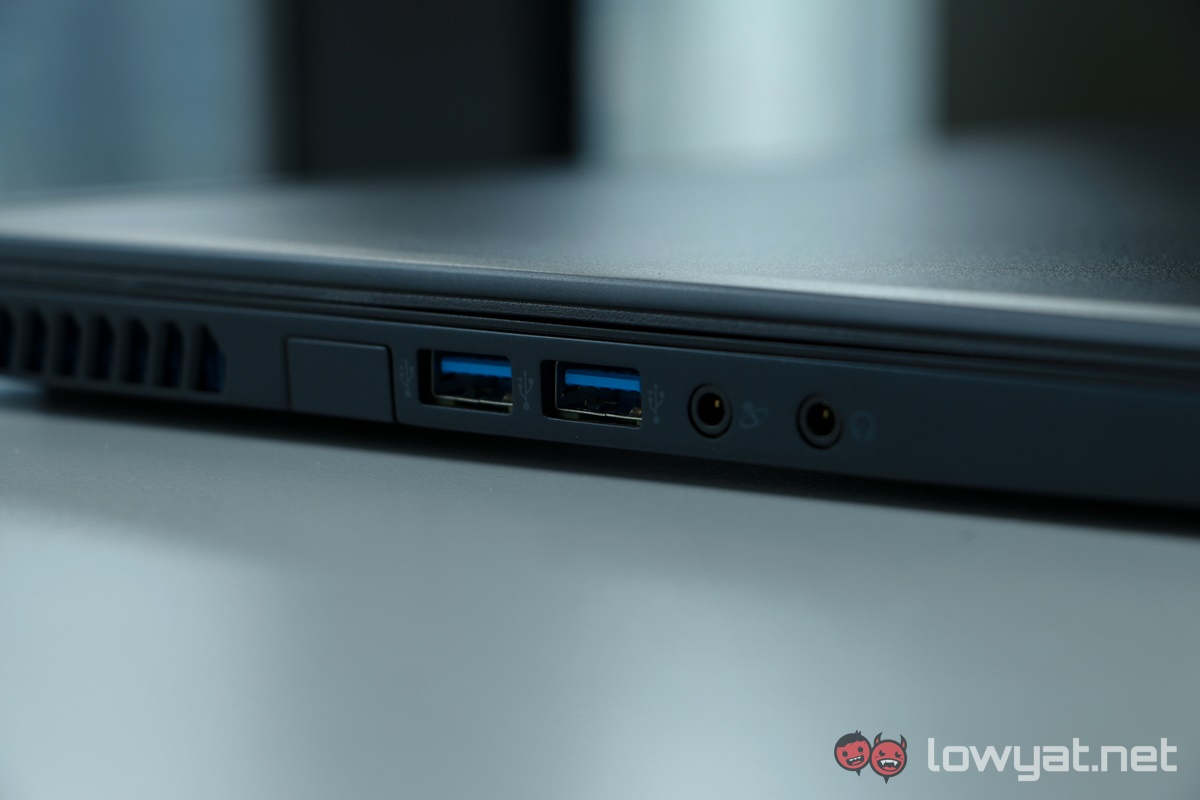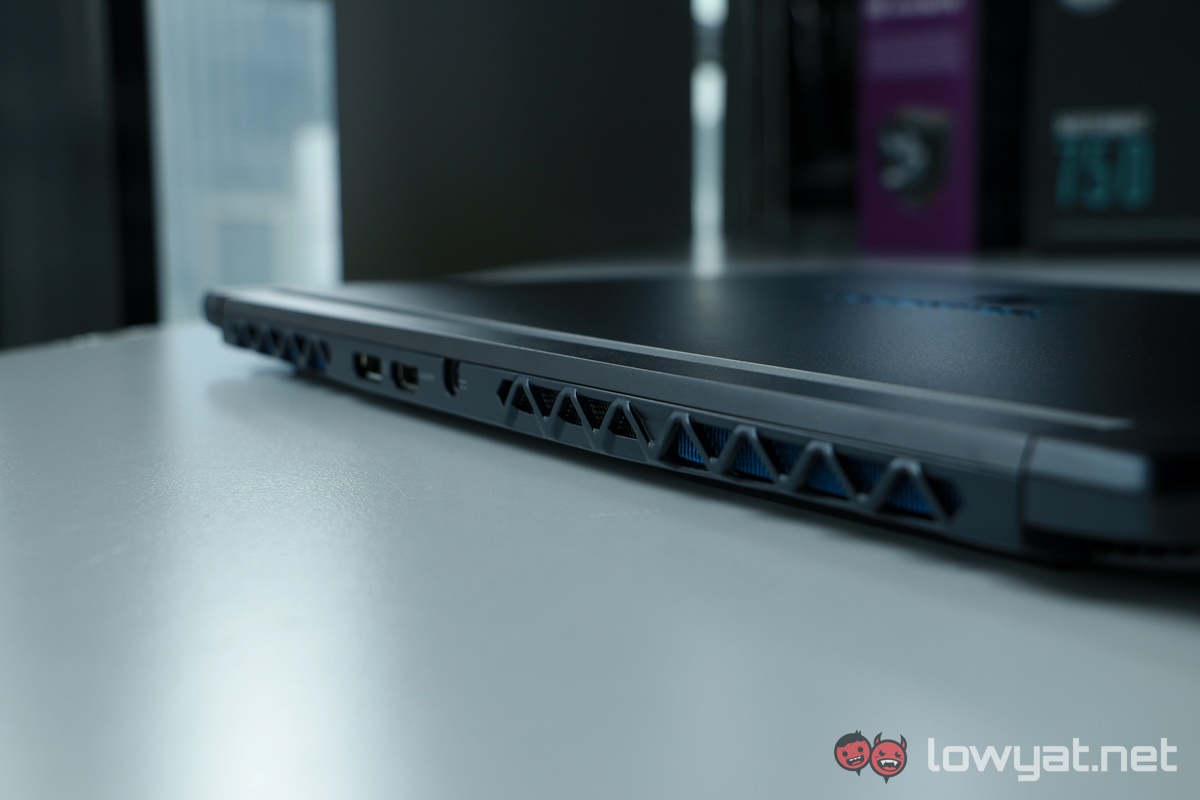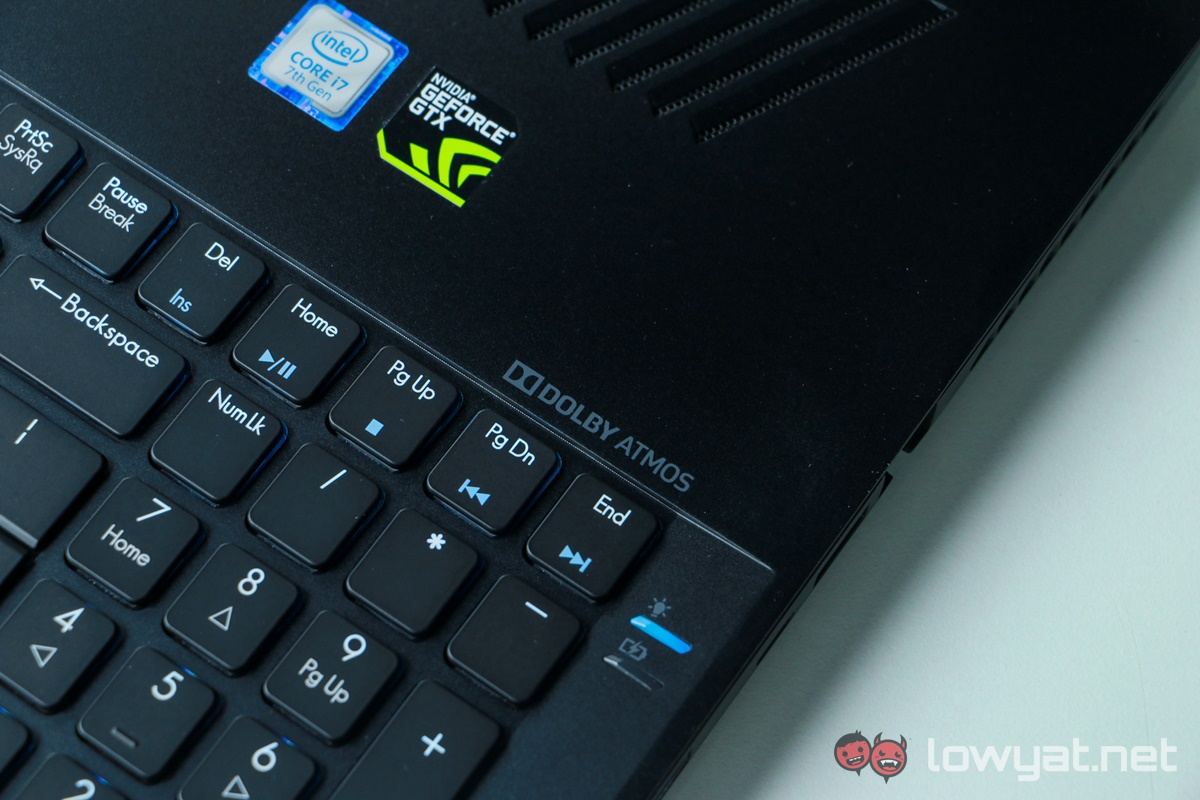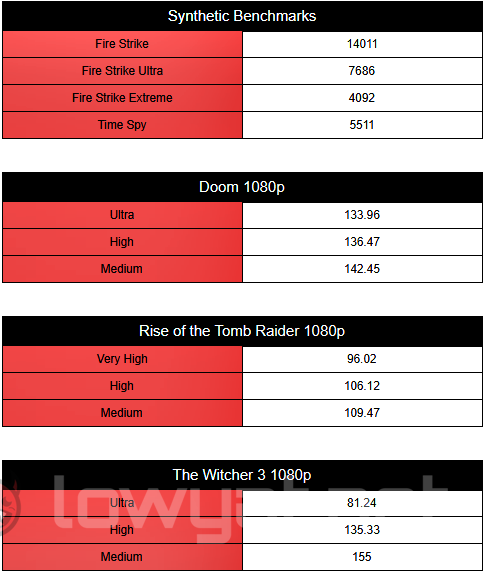The Acer Predator Triton 700 is the second Nvidia Max-Q laptop to have entered our review process. This premium gaming laptop sports an Nvidia GeForce GTX 1080 with Max-Q design, making it thinner and lighter than you’d expect. Its approach to the problem of portability is relatively similar to that of Asus and its ROG Zephyrus we recently reviewed. Did Acer do a better job? We’re about to find out.
Specifications
There is no shortage of hardware on the Acer Predator Triton 700. It is decidedly high-end, with a Core i7 processor with GTX 1080 GPU – but the extras such as the 32GB RAM and 512GB (256GB + 256GB) SSD all add up to a speedy gaming machine. Put all that into a chassis that’s just 2.4kg, and you’ve got a proper gaming laptop without the heft of one.
Design
Like Acer’s other premium gaming laptop, the Triton 700 does away with the red accents synonymous with the Predator line. In its place are blue hues on a matte black slab. It’s fetching, and the slim silhoutte gives a fresh take on the tried and trusted red/black colourways synonymous with the terms “gaming”.
The first thing one would notice about the Predator Triton 700 is that there is no touchpad. Or rather, there is nothing that looks like one. It’s pretty easy to miss, since it genuinely looks like a cosmetic window to view the Aeroblade fan with blue LED lighting – but part of this glass surface is actually a touchpad. This glass surface is perhaps the biggest adjustment needed for using the Triton 700.
The keyboard follows a similar layout to the ROG Zephyrus, being pushed lower down the chassis. This isn’t a cosmetic decision; it is to ensure the keyboard is not located immediately above the GTX 1080 GPU.
On a separate note, both Asus and Acer have taken radically different approaches to making way for the touchpad; showing that there really is a lot of creativity left in the gaming laptop industry.
As a whole, though, I really like what Acer did with the Predator Triton 700. It doesn’t shout “high performance” even when it is, and its clean and subdued lines make for a classy-looking laptop.
User Experience
Let’s get down to it – the Gorilla Glass touchpad is pretty terrible. Premium Ultrabooks (and MacBooks) use glass touchpads, but they’re coated with a matte finish to make them infinitely more usable. The glossy finish on this touchpad makes it a direly unpleasant experience to use, like I’m trying to draw on a window pane with my fingers.
To make matters worse, the glossy surface naturally smudges over time, leaving unsightly marks all over a surface that is clearly also meant to function as a window. Oh, and there is no dedicated right mouse button. In other words, bring a mouse with you – the touchpad is an emergency only option.
Where the touchpad stumbles, the keyboard makes up for it. The Triton 700 has a set of pseudo-mechanical keys that prove to be pretty pleasant to use. It is to be expected for a laptop that costs RM13,999, but less so for one that’s 17.8mm thick. The keyboard won’t make you ditch your full-sized mechanical keyboard, but the tactile feedback is far better than the membrane keyboards usually found on laptops. Acer may not be able to please keyboard snobs (like some of my colleagues), but everyone else should be perfectly happy with the feel of these keys.
That said, this isn’t an easy laptop to use when on the move. The lack of a palm rest forced me to place the laptop further from my body, eating up precious space that may not exist while traveling. It’s also an unfamiliar feeling to be typing without being able to rest my hands on something. All of which simply accounts for a machine that takes some extra getting used to.
Once adjusted, the Predator Triton 700 feels like a perfectly legitimate machine for those who need the extra horsepower. It has a nice big display, plenty of hardware power for running just about any programme or app (including extremely demanding games), there’s a full sized HDMI port, and there’s even a recessed USB port for safely plugging in a wireless peripheral dongle. In fact, the only thing it lacks is an SD card reader. It sounds like a small issue, but matters quite a bit for those in the professional fields such as photographers and even journalists. Needless to say, the average gamer probably wouldn’t notice that anything was missing.
However, one thing that is quite noticeable is in the quality of the speakers. The stereo speakers, with Dolby Atmos enhancements, are quite disappointing. The lack of a subwoofer (naturally to accommodate the slim profile) also leaves the audio output rather bland.
On the flip side, the display is better than what you’d expect on a gaming laptop. The choice of an IPS panel instead of a TN one makes the Triton 700 more versatile as a laptop. It may have slower G2G times, but an IPS panel’s better viewing angles and more vibrant colour output makes it a better multimedia laptop. The 15.6-inch display may only have a Full HD resolution, but the G-Sync support and 120Hz refresh rates makes up for it.
There’s just over two hours of battery life on the Triton 700; a little more than I expected from a Max-Q design laptop. It is also about a half hour more than what I got on the Asus ROG Zephyrus. In any case, the battery life won’t be of much use if you’re planning on doing some gaming or even video editing.
In terms of thermal management, Acer did not follow Asus in implementing a radical new cooling system to accommodate the Max-Q design. Instead, the company goes down the tried and true path with its own Aeroblade fans. The result is an uneven amount of cooling, with the chassis being unable to adequately conduct heat away. It doesn’t help either that there’s a large glass panel over the GPU.
Needless to say, the Predator Triton 700 runs pretty hot under load, with the GPU peaking at 75°C on Witcher 3. It is still nowhere near the 90+°C peaks we saw on the Predator 21 X, and more importantly, the generated heat does not reach the user. The placement of the keyboard prevents the user from experiencing the worst of it; at no point did I feel uncomfortable while gaming. That said, I wouldn’t recommend placing the laptop on your own body while trying to game. It could easily lead to a lot of unpleasantness.
Benchmarks
Competition
Asus ROG Zephyrus
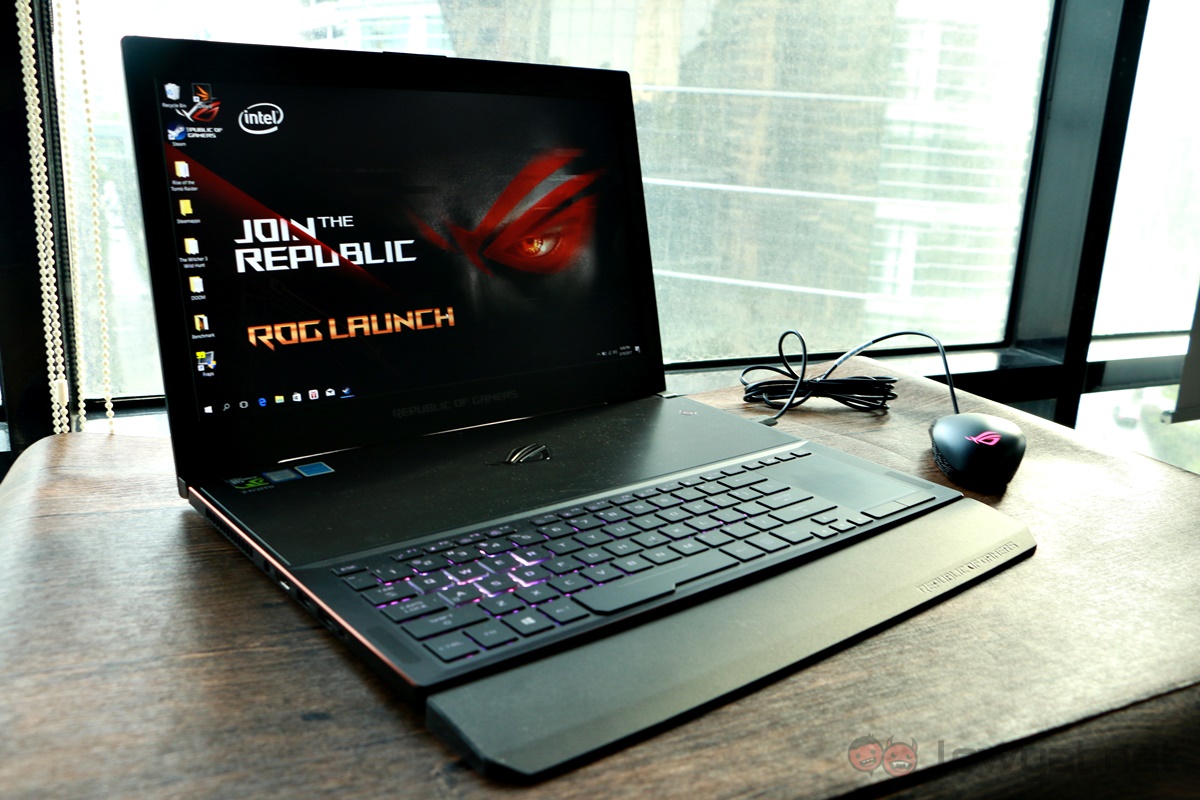
This is the only real Max-Q competition that Acer is facing at the moment. Similarities between the Triton 700 and Zephyrus are undeniable: both have a similar design profile, and include relatively the same hardware. Which would put these two in direct competition with each other.
That said, there is a tradeoff to be made when choosing between the two. The Zephyrus, which costs RM15,999, packs 24GB of RAM, as opposed to the 32GB found on the Triton 700. On the other hand, the Zephyrus has double the amount of storage with its 1TB SSD. This translates into a RM2,000 price difference, with the Triton 700 being the cheaper of the two. The Zephyrus is 100g lighter, if that’s any consolation.
Dell Alienware 15
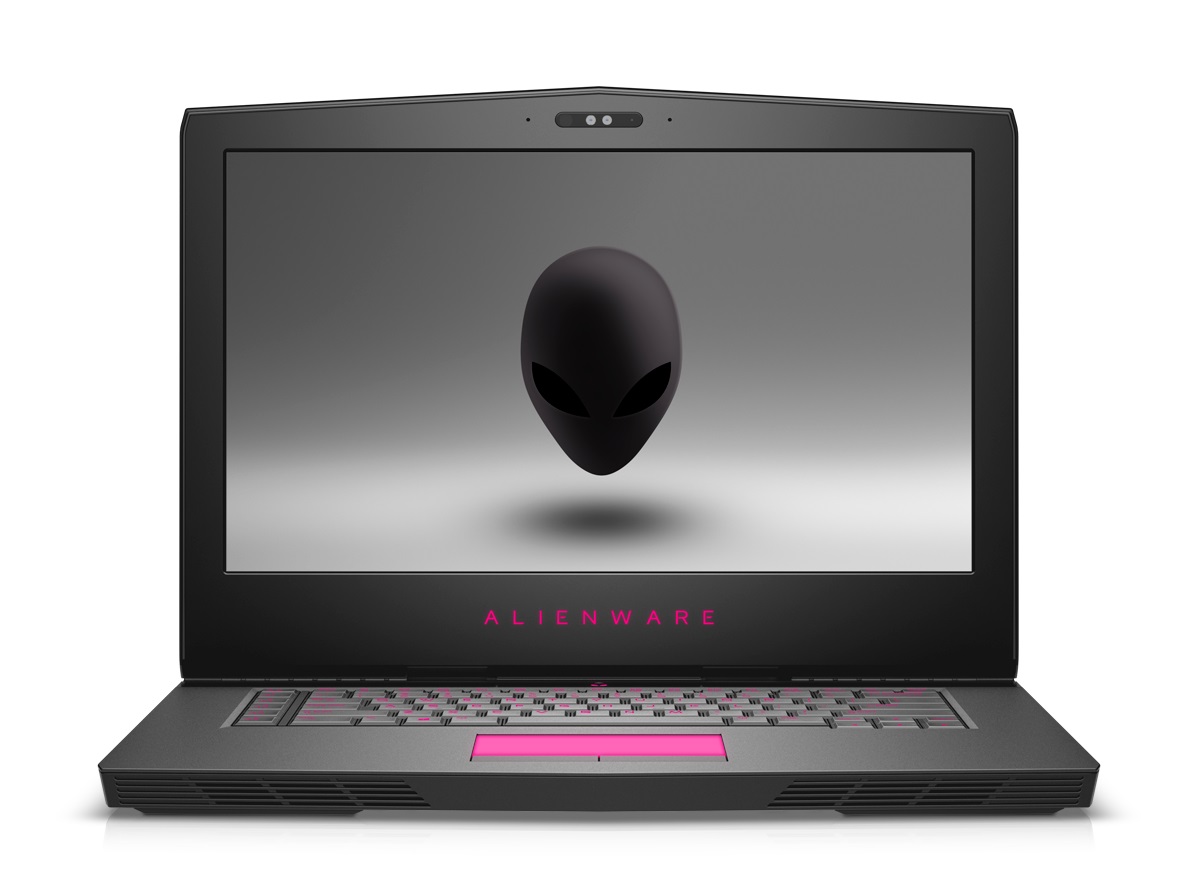
Dell’s Alienware line has long been a staple of the gaming laptop industry. The company offers a wide range of customisation options for the Alienware 15, allowing customers to adjust the specifications to fit their budget. This also allows users to get something approaching the Triton 700.
The GTX 1080 Max-Q version of the Alienware 15 also offers 32GB of RAM, and a 512GB SSD as an optional hardware upgrade. However, each of the storage options includes a separate 1TB HDD; providing a lot more storage than the Triton 700 (2x 256GB in RAID 0). It also packs a beefier processor in the Intel Core i7-7820HK, and with the 32GB RAM and 512GB SSD included, the total cost reached RM14,022.54 – only slightly higher than the Triton.
That said, this isn’t really a true Max-Q design laptop – it weights about 1kg heavier, and is about 1cm thicker than the Triton 700. Dell essentially squeezes a Max-Q tuned GTX 1080 into a chassis that normally packs a GTX 1070. The Alienware 15’s display also has a max refresh rate of 60Hz, though it has Nvidia G-Sync support.
Conclusion
Acer got a lot of things right with the Predator Triton 700. The build quality is solid, there’s – relatively – adequate battery life, and it managed to avoid leaving a giant gap on the bottom. There are also no disappointing elements in terms of hardware. But like the ROG Zephyrus, there is quite a premium to pay for the power you get in such a slim chassis; at RM13,999, you could get laptops with a similar set of hardware for less.
That said, the bland speakers and frustrating touchpad are two missteps in an otherwise solidly executed idea of a powerful but portable gaming laptop. They shouldn’t matter when you’ll likely be gaming with speakers or earphones, as well as a dedicated mouse anyway, so these downsides shouldn’t affect users too much. There’s room for improvement, but the Acer Predator Triton 700 is further proof that Acer’s young gaming line has taken another step in the right direction.
Follow us on Instagram, Facebook, Twitter or Telegram for more updates and breaking news.


